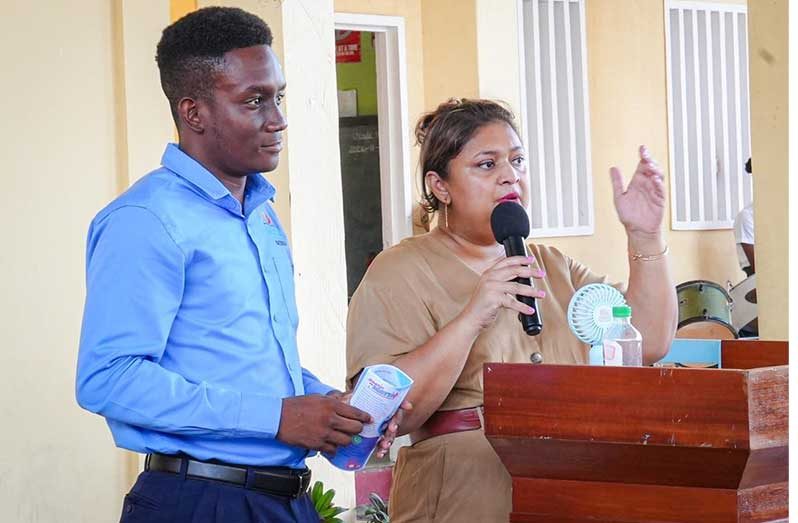THE students who sat this year’s CSEC Mathematics transitioned from solving problems with fractions in Grade 6 to solving simultaneous equations in Grade 9.
For years, students across the Caribbean have struggled with the often-dreaded CSEC Mathematics exam. This persistent fear, combined with the extended learning disruptions caused by the COVID-19 pandemic, led organisations such as UNICEF and UNESCO to predict a significant learning loss worldwide.
Regional and National Performance
In 2024, the Caribbean CSEC Mathematics pass rate dropped significantly from 43% to 36%. That drop meant that approximately 4,000 more students failed the exam as compared to 2023. Guyana was not spared from this. Our national pass rate slipped from 34% in 2023 to 27% in 2024. This translated to approximately 800 additional students failing the subject.
However, it is important to understand the context within which this decline in performance occurred. The students who wrote CSEC Mathematics in 2023 missed the entire Grade 9 and most of Grade 10 due to school closures during the COVID-19 pandemic. Similarly, students who wrote CSEC Mathematics in 2024 missed both Grades 8 and 9. These gaps in foundational learning left students underprepared for the exam.
GUYANA’S MATHEMATICS INTERVENTION
While most of the Caribbean resumed regular classroom instruction, Guyana launched a robust Mathematics intervention programme.
This programme focused on Grades 10 and 11, the students most at risk, as they had missed out on their entire Grade 7 and 8 years of learning. These two years are viewed as a very crucial period since this is where learners transition from primary to secondary education. In the context of mathematics, these students jumped from solving questions with fractions in Grade 6 to solving simultaneous equations in Grade 9. The Ministry of Education introduced several key measures:
1) Increased Instruction Time – Mathematics classes were extended to 240 minutes weekly (8 periods), up from 120-180 minutes in many schools. This allowed teachers to cover the syllabus more effectively and gave students additional time to grasp the content.
2) Morning Sessions – Schools were instructed to schedule Mathematics classes in the morning, using double periods. Morning sessions found students more refreshed and attentive, allowing them to engage more effectively.
3) CSEC Integration – Teachers were required to incorporate CSEC-style questions into daily lessons, giving students regular exposure to the kinds of test items they would face in the exam. This consistent practice strengthened their preparedness and boosted exam readiness.
4) Provision of Resources – Every student received the necessary tools: calculators, topic-organised past paper booklets, geometry sets, textbooks, and graph books. This created equality among all students and gave them enough time to become familiar with tools like the scientific calculator.
5) Deployment of Monitors – Mathematics monitors were assigned to schools to oversee curriculum delivery and policy implementation.
6) Diagnostic Testing – An assessment was conducted in the beginning to guide classroom instruction. Teachers then used the results to prepare lessons according to students’ needs as revealed by the diagnostic test.
7) Mock Examinations – Students sat practice exams designed by the Ministry of Education, closely modelled the official CSEC paper. Teachers then used the results to reteach challenging concepts, while students used the feedback to strengthen their preparation and improve exam readiness.
QuizMe Platform – Students gained access to an online platform featuring over 300 CSEC Mathematics-style questions. Each quiz provided instant feedback, with correct answers revealed upon completion.
9) Educational Videos – Students benefitted from specially created CSEC Mathematics preparation videos aired on the Guyana Learning Channel.
THE IMPACT
These interventions, combined with the commitment of teachers, paid off. Guyana’s pass rate jumped from 27% to 32%. This 5% increase accounted for approximately 600 more students passing the subject as compared to 2024. Comparatively, the overall Caribbean average inched up only slightly from 36% to 38.5%. This marginal improvement highlights how difficult it has been for the region to recover from learning loss. In addition, 78 out of 116 secondary schools recorded an increase in their Mathematics pass rate. Some of the most notable improvements include:
1. Hope Secondary – improved from 18 per cent in 2024 to 64 per cent in 2025
2. Brickdam Secondary – from 46 per cent in 2024 to 60 per cent in 2025
3. Christ Church Secondary – from 43 per cent in 2024 to 72 per cent in 2025
4. North Georgetown Secondary – from 35 per cent in 2024 to 60 per cent in 2025
5. North Ruimveldt Secondary – from 41 per cent in 2024 to 72 per cent in 2025
6. St. Cuthbert’s Secondary – from 13 per cent in 2024 to 47 per cent in 2025
7. Bygeval Secondary – from 43 per cent in 2024 to 77 per cent in 2025
8. JC Chandisingh Secondary – from 56 per cent in 2024 to 75 per cent in 2025
9. Skeldon High – from 0 per cent in 2024 to 40 per cent in 2025
10. Patentia Secondary – from 23 per cent in 2024 to 52 per cent in 2025
Alongside these school-level gains, individual student performance also stood out. A total of 279 students wrote CSEC Mathematics in Grade 10, and 271 of them passed with grades 1–3. Remarkably, 165 of these students secured a Grade One.
Guyana’s progress shows that targeted interventions can produce more meaningful results even in the face of significant learning loss.



.jpg)








